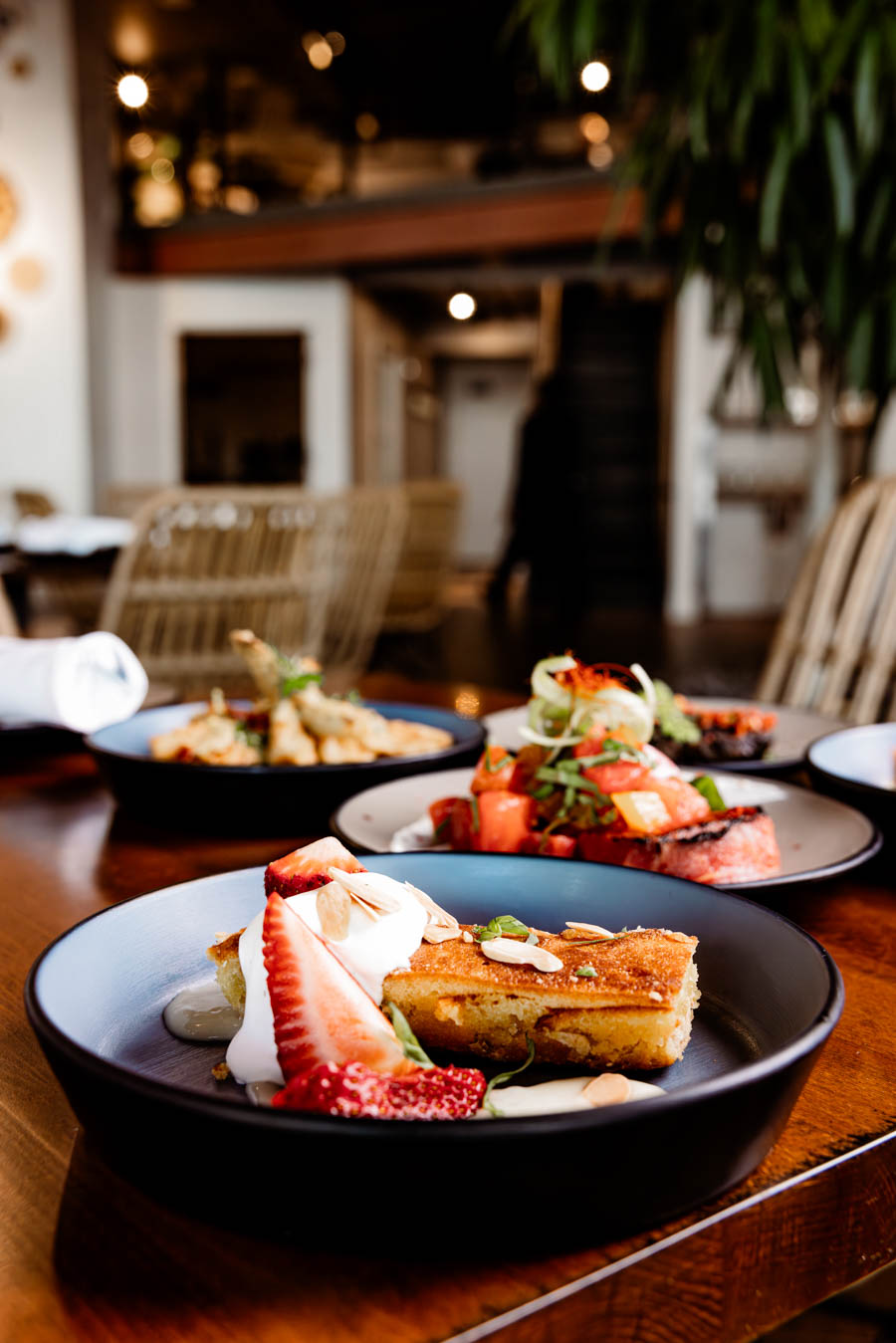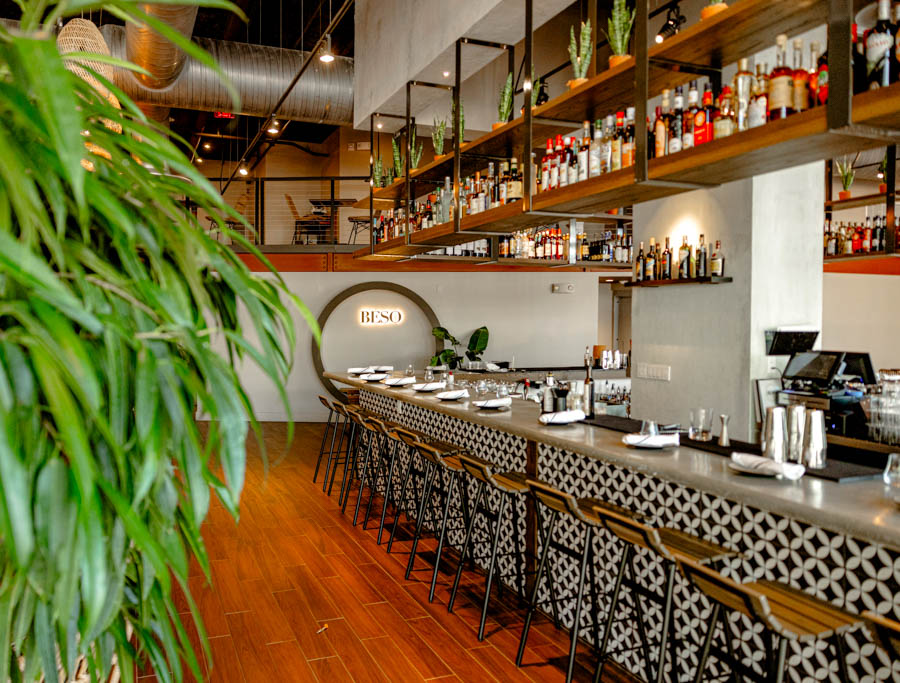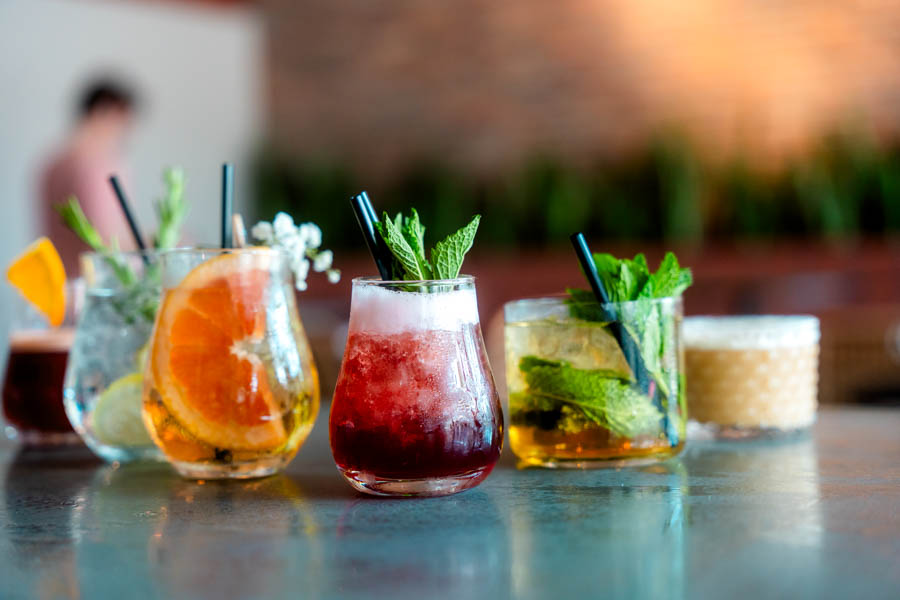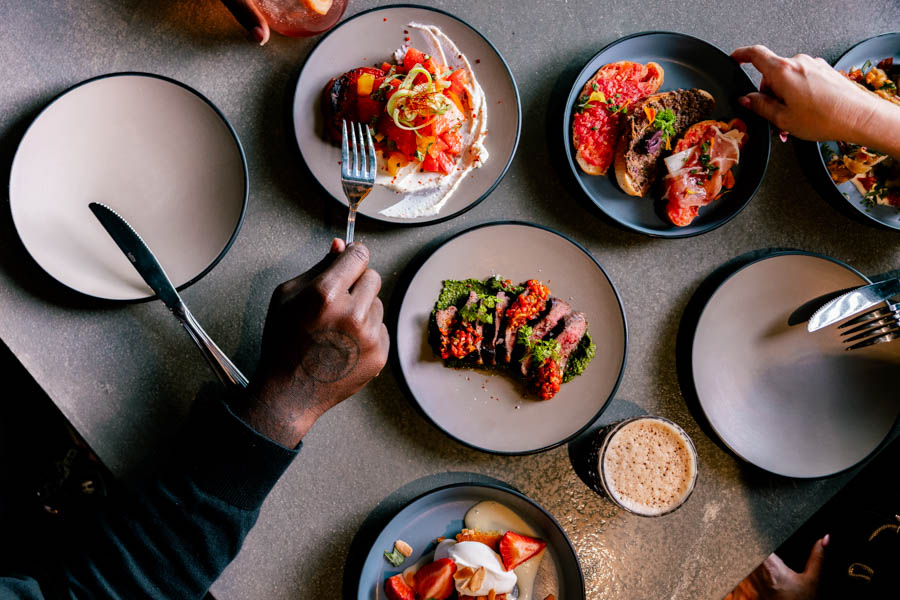They say that good things come in small packages, and nowhere does this statement ring more true than at Beso, Sarasota’s new tapas restaurant. Dreamed up by husband and wife Chris and Kirk Voelker, and their restaurant partner Jason Waganheim, who make up the team behind State Street Eating House + Cocktails, Beso and its dedicated staff use Spanish tapas to invite Sarasotans to broaden their horizons and transform their view of traditional dining.

Tapas originated in Spain, and throughout the centuries, the custom of going out to eat tapas has become synonymous with the country. Spaniards spend many an evening munching on a variety of these smaller-portioned dishes, often with a beer or other beverage, allowing them to sample many flavors. Late at night, Spanish streetside cafés are filled with guests crowded around the table, chatting and sharing their tapas. Tapas culture emphasizes sharing food and embracing the ability to connect with others over a delicious meal, which diners have been looking to experience following the pandemic. A labor of love, the process of developing Beso was akin to that of eating tapas. Every member of the Beso team joined together to fashion an engaging environment serving elevated cuisine. The team says that the Sarasota market was missing this dining and social concept which gives guests the ability to come as they are and be quick or sit for long periods of time.
“We have small plates designed for sharing,” says Waganheim. “There are no courses—no appetizers and no entrees. There’s a fluidity to the dining experience.” In deconstructing the preconceived notions of the structure of a meal, the entire staff, from servers with a penchant for the Picanha steak, to the chefs, encourages patrons to embrace this age-old style of dining popular in the Iberian peninsula. “Our food is rooted in Iberian cuisine—think Spain, Portugal, Southern France and the Basque country—but we play with it. We by all means are not your traditional tapas restaurant,” he adds. The menu reflects this duality.
Classic dishes, like the bread-based pintxos, Pan Con Tomate, Pa Amb Oli and Pan de Aceitunas open a palette-sized portal to Iberia, celebrating the respective flavors of tomato and garlic; tomato, garlic, manchego cheese and jamón as well as olives. In these pintxos, either tomatoes and crushed garlic, an olive spread or manchego cheese and ham top small pieces of toast. Other famous dishes include Tortilla Española, Churros con Chocolate and Paella. Patrons familiar with Spanish food will find exciting options that they may have never heard of, like the Fideuá, a noodle paella that traces its ancestry back to fishermen on the eastern coast of Spain who replaced the expensive Bomba rice that characterizes the dish with the affordable noodle. While this dish features strong seafood components, meat lovers can indulge their cravings with dishes like the Albondigas, or meatballs. Go all in with the Picanha, a rustic cut of grilled steak paired with red chimichurri and mojo verde. Diners looking to venture into new gastronomic territory can count on their server or bartender to serve as their drink and tapas tour guide, helping them select what suits their taste. The menu honors Spanish traditions but ensures that each dish has a twist, a direction that guided Executive Chef Amy Knox, who developed Beso’s recipes by pulling from experience at Wild Mango’s, the restaurant she owned in Belize, and combining it with iconic Iberian flavors.

Take the Almendrado, a dense almond cake suitable for dessert or a midday snack. The cake packs a delightful almond flavor without becoming too sweet and is accompanied by a pickled strawberry and basil mix and a lemon zest puree. “It has the flavor of marzipan but not the sweetness,” she says, “and because it’s buttery and rich I chose acidic flavors to balance it out.” The cake transports guests to Southern Spain, which retains a heavy Arab influence brought in by the Moors in the eighth century. “Almonds are a huge thing in Spain, and the Almendrado is like if almonds, baklava and the Portuguese egg tart had a little baby,” adds Knox.
Along with mesmerizing mosaic patterns and stunning architectural feats, the Moors also brought artichokes, or alcachofas, to Spain, where they took off in popularity. “Spain is known for artichokes, and everybody loves them, so we have a marinated artichoke fried in a gluten-free rice flour mix. They are served with lemon alioli, a lemon confit and fried jamón serrano, or serrano ham,” she adds. It’s impossible to resist dipping these Alcachofas Fritas into the alioli pooling at the bottom of the dish while thanking the Moors for sharing this fantastic finger food with Europe.
Manchego cheese holds a similar rank to artichokes in Spanish cuisine and makes a cameo in the Sandía de Jerez, a charred watermelon and tomato salad, a reimagining of one of Knox’s recipes from Belize. The cheese appears in the form of Manchego crema, marrying with the watermelon to create a flavor that is both bold and refreshing. “It’s flexible and can be an intermezzo, a dessert or a summertime snack,” says Wagenhiem, “and when we say we get playful with the menu, this is what we mean.”

This playfulness translates from the menu over to the restaurant’s aesthetics, defined by an open and airy space punctuated by bursts of greenery. Decorative tiles and mosaic-inspired fabrics add flair to the space without making it kitschy, a design element of paramount importance for Chris Voelker. “We wanted it to be unique and open while remaining modern and welcoming,” she adds. Upon entering the restaurant, diners get the sense that Beso respects Spanish traditions while riffing off of them, a theme best illustrated by a giant canvas featuring Miguel de Cervantes accessorized by street art graffiti. “I call him Javi,” says Voelker, whose husband came upon the image while touring Spain searching for inspiration. The portrait is a thought-provoking blend of the old and the new that embody Beso’s innovative spirit. Even the restaurant’s smallest details were curated to capture the joyful nature of tapas. Instead of fancy wine glasses with stems, the eatery serves various cocktails in chatos. “Chatos are a utility type of glass in which wine is poured, and are found in Spanish taverns. They’re ubiquitous and simple, inviting guests to rethink food and beverage and enjoy it for the sake of eating,” Waganheim adds. “Because the chato has no stem, it holds the aesthetic allure of tapas in Spain but also the simplicity of enjoying a meal for what it is.”
At many establishments, dinner plays out like a drama unfolding across the table. One guest ponders whether or not they should order an appetizer, while another forms a point-by-point argument for starting the meal with dessert. Another invests herself in properly holding up her wine glass so as to appear sophisticated. Beso’s team invites patrons to let go of such eating-out stand-bys, beckoning them to slip into a fresh mindset. “We get so wound up in analyzing food and beverage that we forget to enjoy it,” says Waganheim, who hopes that diners come in open-minded and eager to embrace a new approach to food. “It’s not just about the food and beverage piece, but also about the ability to come and sit with others and have a different experience than what you’re used to in Sarasota. You can pull up a chair onto a party of two and get comfortable or stand and eat at the bar. Just be, enjoy and have fun.”









